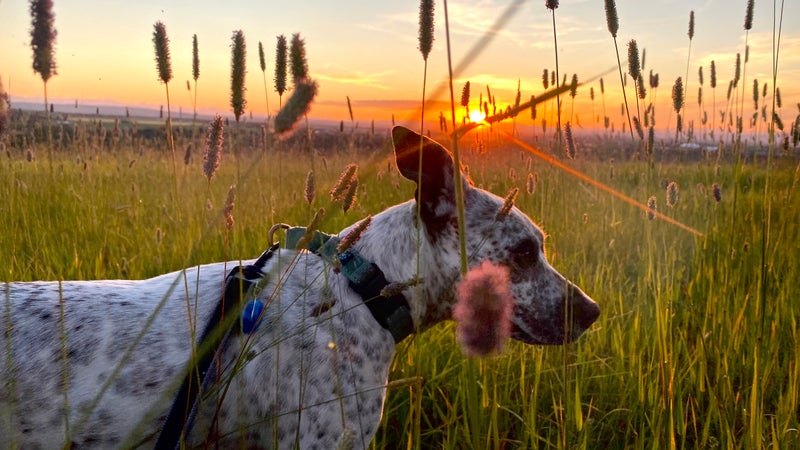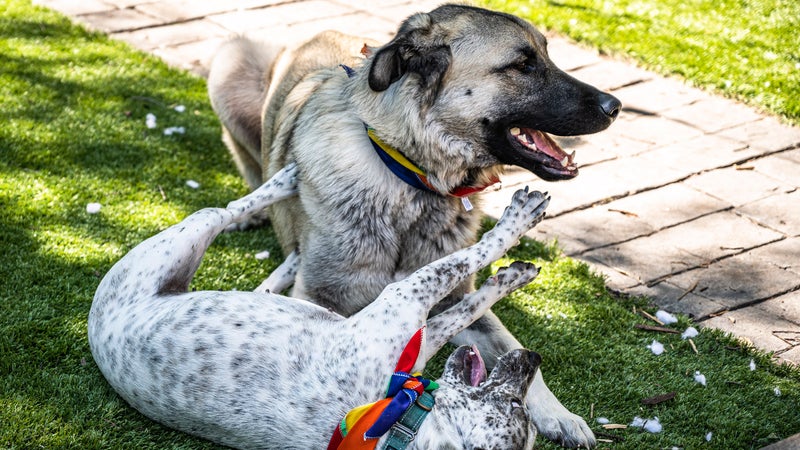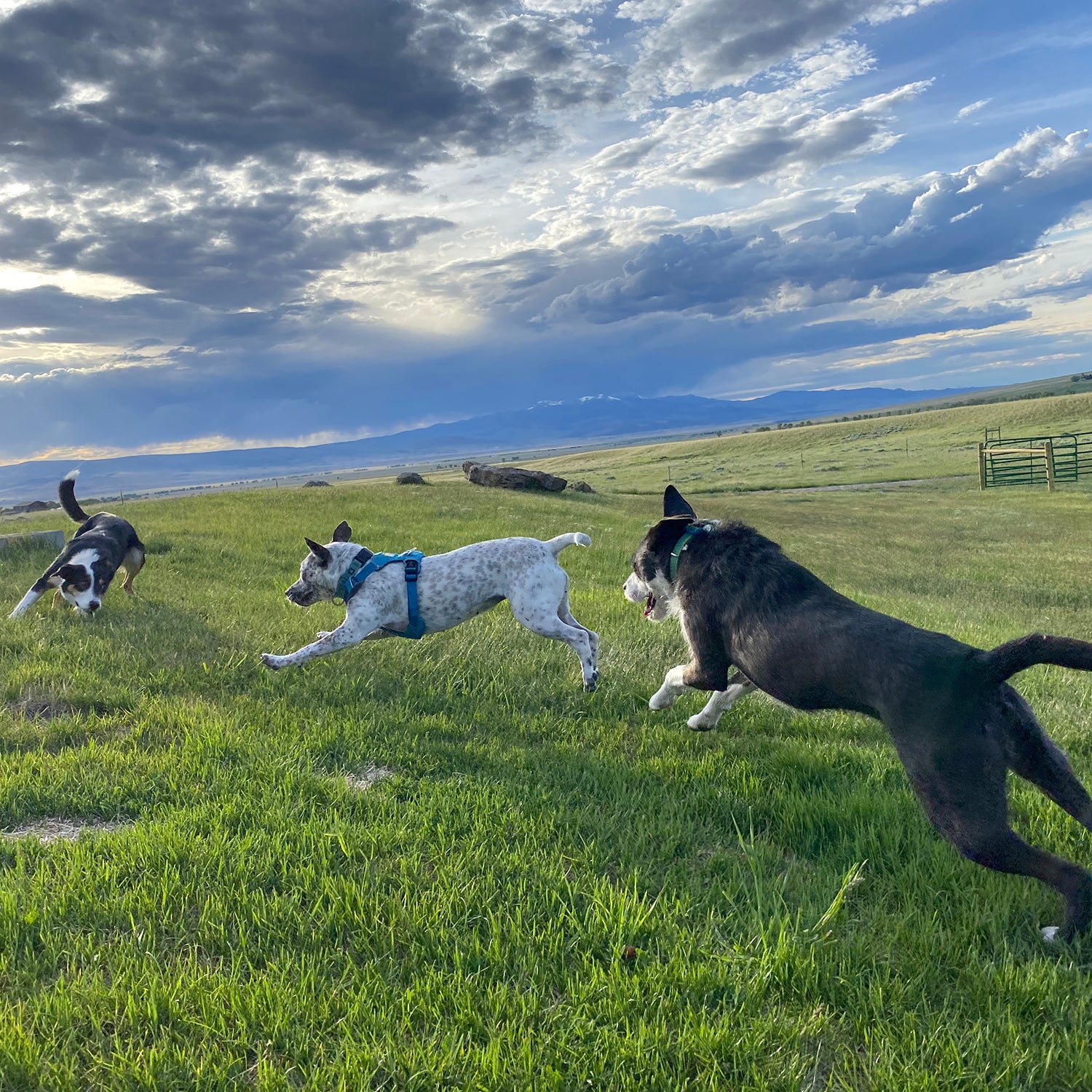Did you adopt a dog during the COVID-19 shutdown? We’ve already talked about the importance of safe socialization and building outdoor experiences into that crucial early learning window. But now you’ve got a fur missile tearing around your house, gaining a capacity for mischief-making in proportion to its growing size. What do you do about that? I hope you have a good pair of hiking shoes.
is dealing with this exact issue right now. His dog, Kit, is just over a year old and has made huge strides in confidence since Stuart rescued her last November. But as Kit has learned that she has a safe, stable home and a patient, loving owner, that confidence has also made her more curious, more independent, and, at times, a little noisy.
I say that as the owner of three big, independent dogs and a fan of Miss Kit. Dogs are not robots (and dogs with personality are not bad dogs). It’s our responsibility as their owners to help them learn to fit into our lives in the most seamless way possible. Dogs evolved as human symbiotes, after all, so a dog that makes you happy is going to be a happier dog.
Since Stuart is escaping Los Angeles this summer by isolating with me and my wife, plus our friend Kevin (another SoCal refugee), here in Bozeman, I’m helping him learn to be a better dog owner. And a big part of that is building exercise into Kit’s daily routine.
One of the most remarkable things about dogs is their sheer variety of sizes, shapes, and colors. Kit weighs 35 pounds and, as far as I can tell, is some sort of cattle dog/pig hybrid. Her best friend is our youngest dog, Teddy, a two-year-old, 115-pound Anatolian shepherd. Given their differences in size, body type, and the alleged personality traits of their different breeds, you might think they have different exercise requirements. But out in the mountains, they’re both able to complete the same hikes, through the same terrain, over the same distances. That’s because factors like age and personality are more important than its size when determining how much exercise a dog needs.
If your dog is very young or very old (or suffers from health issues ), there are some commonsense limits to the amount of exercise that’s appropriate for them. The formula I’ve always used for puppies is to give them 15 minutes of exercise outside of your home or yard twice a day from the time they typically come home at eight weeks old, adding five minutes to both of those periods with each additional month of age until the dog is fully grown. So, if you adopted an eight-week-old puppy on April 1 of this year, you should be giving them around 35 minutes of real exercise twice a day.
Providing that amount of exercise will result in a dog that is calmer, more attentive, and better able to focus during training sessions. It’ll also give you a dog that will sleep through the night with fewer disruptions—not to mention one that is healthier. Just like humans, a dog that exercises regularly will be less prone to injury than one that only gets out on weekends.

Last weekend, Stuart and I took all four dogs out for a 90-minute morning hike before it got too hot. They fell asleep in the sun for most of the afternoon. That night, I drove to a neighboring town with Teddy to have dinner with some friends. That morning’s exercise meant she was calm and quiet on the hour-long drive there and back and patiently slept under the truck while we had dinner. The next morning, Teddy stayed asleep until my wife and I woke up.
But come workdays, neither Stuart nor I always have time for that same hike. So, how do we exercise our dogs? Building significant exercise into your dog’s daily life can be challenging, but figuring it out is the real key to successful dog ownership. Today, Stuart’s coming over to work from our house during the afternoon, which means Kit and Teddy will get to spend a few hours wrestling each other in the yard. Once it cools down a bit, I’ll leash up Teddy and probably one of the other dogs, and we’ll walk a mile to the grocery store rather than drive. My wife will probably go for a jog at some point and take one of the dogs along on that, too.
It’s these sorts of alterations to your routine—an easy playdate plus an evening walk—that make adding exercise to your dog’s daily routine possible, even when you’re busy. Pre-pandemic, I used to walk, rather than Uber, to our favorite restaurant. I’d do the same for in-person work meetings, even if they were miles away. Just pull the distance or time you know works for your dog from your weekend activities, and try to meet that most weekdays through smaller increments built into the stuff you already need to do. That will also help your own fitness and mood. I really don’t miss having to find a place to park every time I run an errand. I schedule phone calls during dog walks, so I don’t have to worry about downtime.
It’s important to note here that exercise means exercise, not a bathroom break. Your dog needs ample opportunity to run and play, not just pace your walking speed around the block. If you don’t have a big yard or off-leash areas near you, then you’ll need to find a way to add that running into your routine.
Is there such a thing as too much exercise? Absolutely, and those durations will change over time as your dog ages. To understand where their individual limits lie, you’ll need to develop an understanding of your dog’s body language and constantly be on the lookout for signs of trouble. Because dogs want to please us, they’ll often struggle through pain or exhaustion without complaint.

A dog’s ability to endure heat or cold is often breed specific—a thickly coated husky will do better in winter than a pit bull—and is also influenced by the dog’s experience with those conditions. A husky that grew up in the Southwest will be better able to handle hot sun than one that’s never seen a day over 80 degrees. You can also gain confidence in your dog’s ability to handle certain conditions through similar experience with it. I know Teddy prefers to go without an insulated jacket in all but the coldest, subzero conditions, even on long winter hikes, because we spend all winter on the trail with her.
But even with that confidence, I still need to look out for warning signs of fatigue, overheating, or getting too cold whenever we’re out exercising. The easiest way to observe your dog’s health is through their energy levels. If your normally boisterous dog is lagging behind and moving slowly, that’s probably a sign that they need to go home and lie down somewhere comfortable. Shivers are another sign of exhaustion that are easy to see and can occur in both hot and cold weather. Other good indicators can be nose temperature, panting, drooling, pulse rates, and the color of your dog’s gums. With those, you need to establish a baseline from which to make comparisons. Get in the habit of observing them closely during activities so you know what feels or looks normal. Finally, poop is one of the first things to change if a dog’s not feeling well. If normally firm stools turn into diarrhea, you know you’ve got a problem.
Use those same signs to track your dog’s capacity for exercise as it ages. They can also help you determine when a dog with significant limitations—like a brachycephalic breed or one bred too small or large for general health—needs to take a break or go home.
Kit’s transformation into a happier dog is obvious, even after just a few weeks up here in Montana. A dog that was beginning to ignore calls to come and barking at virtually any disturbance is now trotting contentedly along with her owner during hikes and learning to ignore external stimuli in the yard. Kit’s waiting patiently outside the grocery store and sleeping through movie nights on the couch next to our dogs. Stuart doesn’t have to invest as much energy in monitoring or correcting her behavior, so he’s happy, too. All that for the price of a little shoe leather. Exercise is by far the most effective and cheapest investment you can make in your dog.


